The Doc Life: The Six Important Lessons I Learned On Location
Each month in The Doc Life, Film Independent blogger Anthony Ferranti dives deep into the how’s and why’s of nonfiction filmmaking, featuring advice and hard-won insight from top veteran and emerging documentarians. Enjoy!
***
Documentary projects begin for all sorts of reasons. Some stories find the filmmaker, like when Edward Snowden contacted Laura Poitras and the result was Citizenfour. Others are sparked by an interesting person. For instance, 2018 Film Independent Spirit Award Truer Than Fiction award-winner Quest (directed by Johnathan Olshefski) began as a photo essay focusing on subject Christopher Rainey. In the beginning, filmmakers likely have many thoughts and ideas about what the story is going to look like. But it’s through filming that a deeper story inevitably begins to emerge.
In this month’s The Doc Life, I write about my recent experience as a crewmember on a documentary. A friend and filmmaker, Deborah Attoinese, invited me to join her on a shoot in Florida for her new project, Women of the Wildlands, which focuses on the women of the U.S. Forest Service Fire Department, their struggles and successes as they attempt to navigate a male-dominated work environment.
A two-person crew, we were embedded for an entire week with 40 women—and one man!—taking part in a training program called Women-in-Fire Training Exchange (WTREX—more info here.) We camped out together at the Tall Timbers Research Facility, a 2800-acre research station near Tallahassee, Florida. Here are some of my experiences and the lessons I took away from this filmmaking adventure, which I’m excited to share…
TRAVEL DAYS. PACK TIGHT, TRAVEL LIGHT.
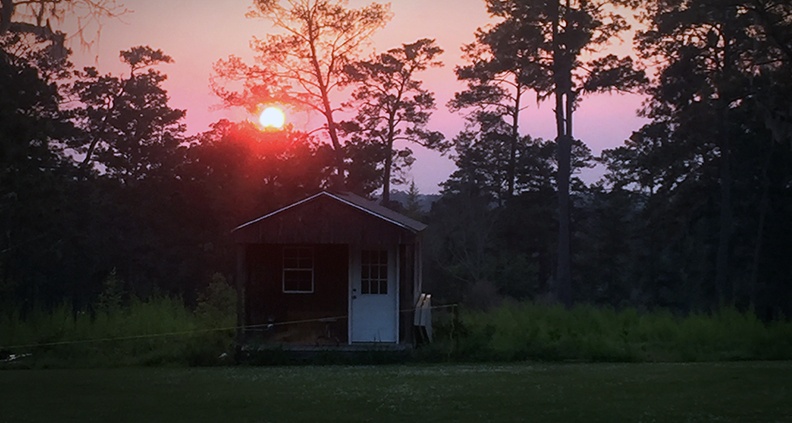
We were on a tight budget, so we needed to pack light, tight and smart. To avoid a $75 charge for bags weighing over 50 pounds, our personal items had to be kept to a minimum. So no portable pour over coffee kit for me.
For film equipment we took a minimalist approach as well. We brought two cameras: a digital DSLR with three lenses—a 24mm-70mm, a 200mm and a wide-angle 16mm-35mm. Plus a camcorder with a zoom lens. For sound, we had a little Rhode shotgun mic and a Lectrosonics lavalier mic system (with a concern about crowded digital audio channels, Deb decided to go old school. The system gave us super clean audio, even on windy days.) We had a portable mixer and headphones for the DSLR and, of course, a laptop and external hard drive to download footage.
Since we were shooting mostly outdoors, it made sense and saved weight to work with natural light. We packed a collapsible diffusion panel and hit a 99-Cent store on our way to Tallahassee, where we picked up some black and white foam core to use as bounce cards. A Kinkos proved way more elusive—impossible, actually.
DAY ONE. GETTING COMFORTABLE AROUND A CAMERA.
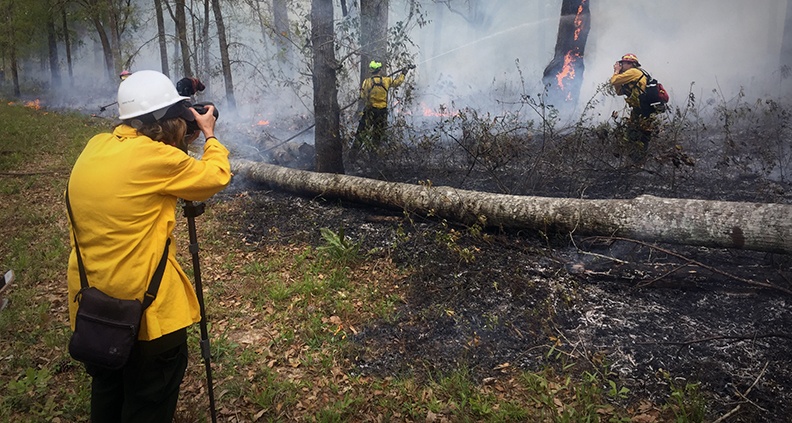
Our first actual day on location felt like the first day in school when you’re the new kid in class, you don’t really know anybody and you’re not sure where to sit.
Everyone was—at best—mildly curious about these documentary people walking around with all this film gear. And even though Deborah had been speaking with some of these women for months, we were essentially meeting them for the first time.
We needed to establish trust and a rapport with the group in order for them to feel comfortable with us filming them. I asked Deborah how she approaches this. “You need to be open. I tell them what I’m trying to do. I want to be vulnerable and a bit humble. I do some research, but I keep it to myself. It’s the person in front of my camera that has the knowledge and insights I’m looking for.”
DAY THREE. LOOK AWAY FROM THE SMOKE. AND, OH YEAH… RUN!
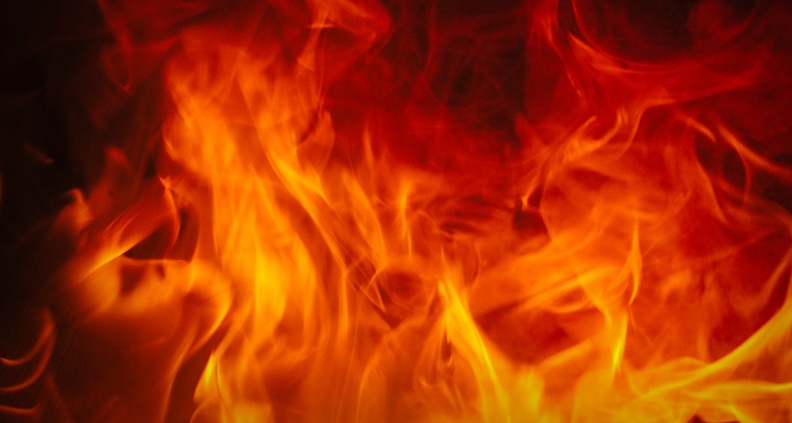
A fire technician walked along the side of a dirt road a few feet away from us, dripping liquid fire from the spout of a dirty oilcan to ignite the low brush for training purposes. My director, DSLR to her eye, focused the action. Suddenly, the small flames roared up to several feet high, the wind shifted and without warning we were engulfed in a thick grey smoke—not good!
Our guide calmly told us: “Look away from the smoke and flames.” Deborah and I (less calm) ran after our guide. I reached back and grabbed my director’s free hand, helping her not stumble as she cradled the camera in the other. My eyes were watering from the smoke, so I shut them and ran blind. The heat was intense. But after a few tense moments, we made it away from the fire.
This was a great reminder to me of how easy it is to get pulled into what’s going on just the other side of the lens—and how important it is to not forget about the rest of the world outside the frame!
DAY FOUR. GETTING THE INTERVIEW.
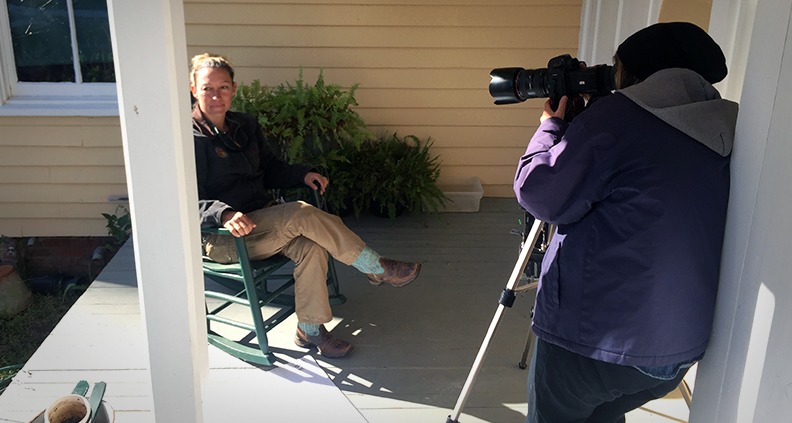
The next morning was really windy, which meant there were no prescribed burns scheduled. For us, it was a golden opportunity to spend the day filming as many interviews as possible. While Deb went around securing interviewees, I hustled around the grounds looking for interesting locations that were out of the wind. One in particular turned out to be perfect.
We set up on a small porch tucked into the back corner of an old plantation home. We had the interviewee sit in an old weathered rocking chair and placed one of the 99 Cent Store foam core boards at her feet. We had quickly set up a really comfortable and private space away from everyone, which I think made our subject feel relaxed and free to share her story with us.
At one point in the interview, when our subject was talking about her home, she said: “One of my favorite things to do at home is sit on my porch in a rocking chair.” The director then pointed out that we were on a porch and she was sitting in a rocking chair—a great moment. We agreed: little things like that make filmmaking fun.
DAY FIVE. LET’S JUST TALK.
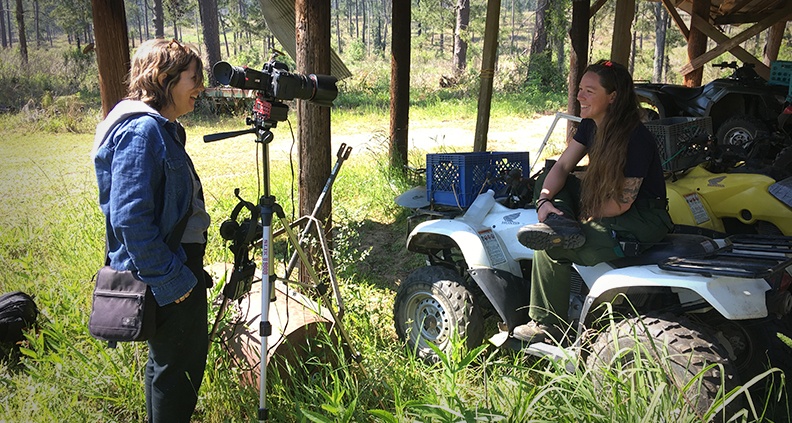
Perfect weather cleared the way for the WTREX group to execute their final burn of the two-week training exchange. They were going to burn a 27-acre stretch of land located on a private land preserve which had been a plantation in the pre-Civil War days. Driving through the nearby town to the location, the occasional Confederate flag flying reminded us that we were in the deep, deep South.
Before the burn, the crew had some down time to grab a snack and relax before a long day of smoke and fire. My director took this opportunity to ask a woman who previously refused an interview if she’d be open to just talking about her knowledge of trees and their relationship to fire. Another woman joined in and there was a nice exchange that illustrated part of why these women do this job; their love of nature.
The director and I discussed how sometimes getting someone to just talk about something not explicitly related to the main topic can generate footage that can broaden the emotional palette of your film and give you interesting options in the edit.
DAY SIX. TIME TO SAY GOODBYE.
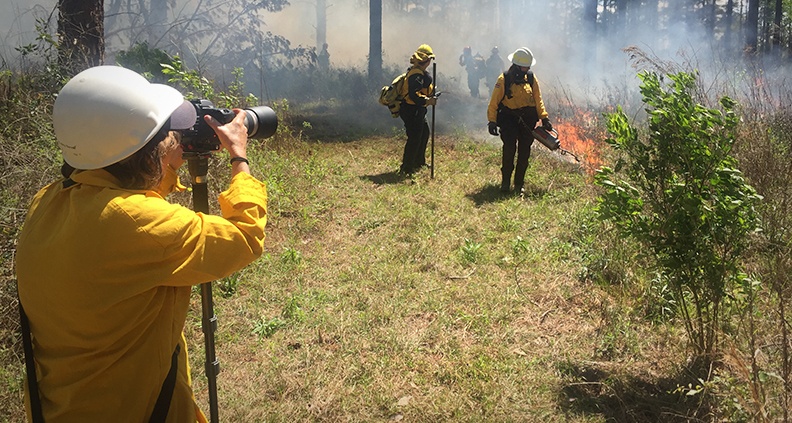
By the end of a solid week of shooting, Deborah and I took stock of what we’d accomplished. We had captured some truly dynamic images of these women working with fire. We also had some intimate and candid interviews from the women (and several of the men) who participated in WTREX.
I’ve been crew on dozens of film shoots and produced dozens more projects, but this was the first documentary shoot I’d been a part of. Deborah and I had talked about her film more than once since she began—so I thought I had a good idea what her film was all about.
By working on location with the director, I saw how everything you encounter in the field, and everything you film, has the potential to generate new ideas. As a filmmaker becomes more familiar with her subject, better questions arise. New storylines open up and previously unseen options for how to tell the story can emerge.
To learn more about Women of the Wildlands and how to support the project, please visit the film’s Facebook page.
Learn how to become a Member of Film Independent by visiting our website, and click here to subscribe to our YouTube channel. Also, why not be our friend on Facebook, Twitter and Instagram?
(Header: Anthony Ferranti and director Deborah Attoinese on location in Florida)